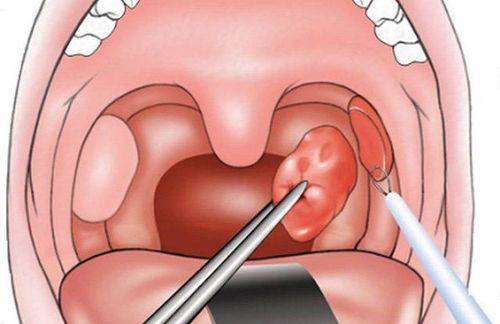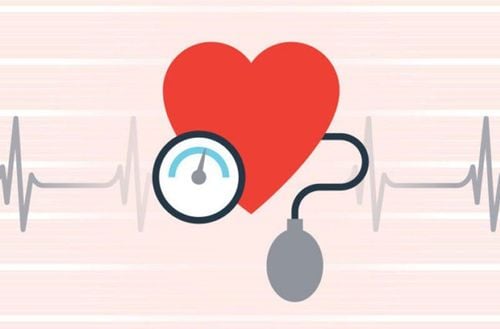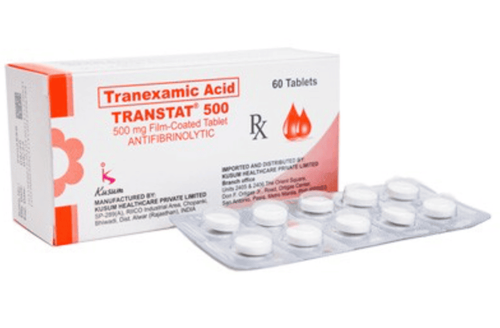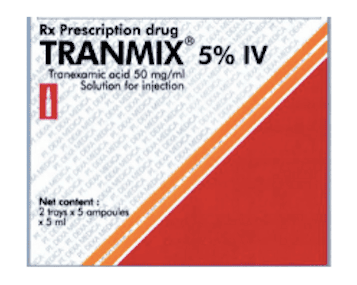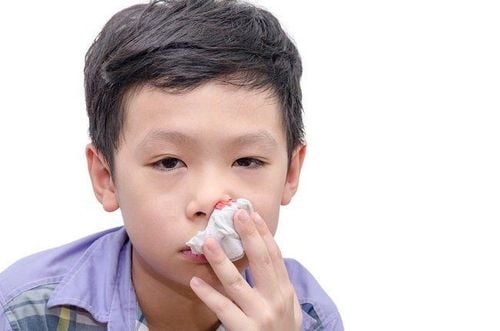This is an automatically translated article.
The article is professionally consulted by Master, Doctor Nguyen Thanh Hung - Department of Pediatrics - Neonatology - Vinmec Nha Trang International General Hospital.Nosebleeds, also known as nosebleeds, are bleeding from the lining of the nose to the nose before or from the back of the nose to the throat. This phenomenon occurs often in young children, especially children from 3 to 8 years old. Nosebleeds are usually divided into 2 groups:
Anterior nosebleeds: 90%, easy to control at home or medical facility. Posterior nosebleeds: Less common, hospitalization is recommended for intervention by an otolaryngologist.
1. Causes of nosebleeds in children
There are several common causes that affect these microvasculature and lead to nosebleeds in children:Common causes: Idiopathic nosebleeds - 90%, benign and frequent worried parents.
Less common causes:
Nose foreign body: With one side runny nose, bad nasal discharge, stuffy nose. Sinusitis . Certain hematological diseases. Rare causes:
Tumor septum, nasopharyngeal fibroid,... Vascular malformation disease.
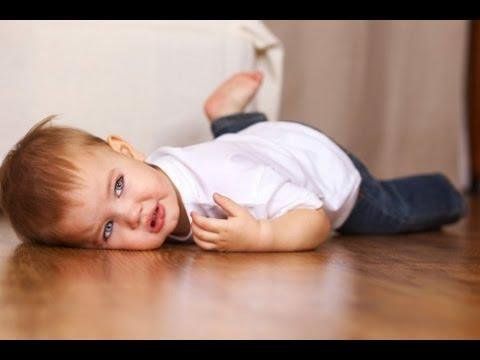
2. How to handle when the baby has a nosebleed?
When a child has a nosebleed, parents need to calmly follow the following basic steps to help their child overcome it.
Step 1: Identify the side of the nose that is bleeding Children often have a nosebleed from one side of the nose, however, when bleeding, children often have a reaction to rub their nose, making it difficult to distinguish which side the nosebleeds are coming from. Therefore, when mothers discover that their children have nosebleeds, absolutely do not let them continue to rub their noses. After wiping the nose, mom should put the baby's head slightly forward to let the blood flow and you will know which side of the nose is bleeding. At the same time, this position prevents the nose blood from flowing back to the throat, causing vomiting.
Step 2: Stop the bleeding Put your finger on the child's nose, slightly tilt the child's head up and hold it for about 5-10 minutes to stop the bleeding. Note, do not squeeze the bridge of the nose or only press one side of the nose because doing so can not help stop the bleeding but also causes pain in the child. In addition, do not release your hand too soon or too many times because it can make the bleeding last longer because a clot has not yet formed to prevent blood from flowing.
Step 3: Post nosebleed care for the child Let the child rest in a static state. If the nosebleed continues to flow and is flowing down the throat, place the child on his side to let the nosebleed out. Do not let the child swallow this blood because it is very likely that the child will be poisoned, causing vomiting, abdominal pain and discomfort.
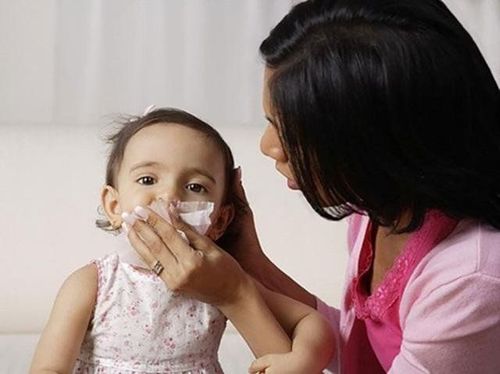
3. How should nosebleeds be prevented in children?
Nasal hygiene for children: You can clean your child's nose about 1-2 times a week with physiological saline to prevent sinus diseases. This method should not be abused because it can cause the loss of natural mucus covering the nasal mucosa, making the child more susceptible to dry nose, infection, and damage to the nasal mucosa. Keep the baby's nose moist by applying vaseline to the front part of the nasal septum and give the child enough water to drink enough water to balance the body's moisture with the outside environment.4. When my child has a nosebleed, do I need to see a doctor?

The child has continuous nosebleeds and cannot stop the bleeding after more than 7-10 minutes of squeezing the nose. At this time, parents should promptly take the child to the nearest medical center for first aid and prevent blood loss in the child. Children often have repeated nosebleeds for no apparent reason. This could be a sign that your child has a nose problem. Parents need to take their children to the doctor in time to find out the cause and treatment solutions. Children with nosebleeds accompanied by bruises appear on the body or at the same time bleeding in other areas such as feces, urine, ... Children are suffering from other diseases affecting clotting function blood diseases such as liver disease, kidney disease, hemophilia, etc. Heart palpitations, difficulty breathing or spitting or vomiting blood. You should take your baby to a reputable medical facility to be examined and consulted by a doctor. The Pediatrics Department at Vinmec International General Hospital is the address for receiving and examining diseases that infants and young children are susceptible to such as: viral fever, bacterial fever, otitis media, pneumonia, etc. ..., especially nosebleeds. With modern equipment, sterile space, minimizing the impact as well as the risk of disease spread. Along with that is the dedication from the doctors with professional experience with pediatric patients, making the examination no longer a concern of the parents.
Please dial HOTLINE for more information or register for an appointment HERE. Download MyVinmec app to make appointments faster and to manage your bookings easily.






